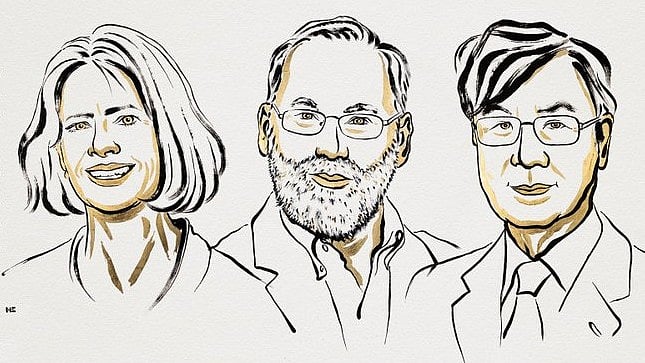Meet Winners Of Nobel Medicine Prize 2025; Know How Their Invention Will Benefit Mankind
Scientists Mary E Brunkow, Fred Ramsdell and Shimon Sakaguchi win the 2025 Nobel Prize in Physiology or Medicine for 'their discoveries concerning peripheral immune tolerance'

Mary E. Brunkow, Fred Ramsdell & Shimon Sakaguchi | Image Courtesy: Nobel Prize website
The 2025 Nobel Prize in Physiology or Medicine has been awarded to three scientists, Mary E. Brunkow, Fred Ramsdell, and Shimon Sakaguchi, for their groundbreaking work that explains how the human immune system knows when to attack and, just as crucially, when to hold back. Their “discoveries on peripheral immune tolerance” explained that the body's immune system can be kept under control to prevent it from attacking its own organs.
Meet the winners of Nobel Medicine Prize 2025:
Cracking the code of immune balance
Our immune system is a double-edged sword; while it protects us from countless microbes every day, it must also avoid attacking the body’s own cells. But what keeps this powerful defence mechanism in check? The 2025 Nobel laureates have provided the answer through decades of pioneering research that uncovered regulatory T cells (Tregs), the immune system’s own peacekeepers.
“Their discoveries have been decisive for our understanding of how the immune system functions and why we do not all develop serious autoimmune diseases,” stated Olle Kämpe, chair of the Nobel Committee, in an offcial statement.
Their collective research revealed how regulatory T cells prevent immune cells from turning against the body, maintaining a delicate balance between defence and destruction.
Discovery that changed immunology
According to the Nobel Prize website, the story of this discovery began in 1995, when Japanese immunologist Shimon Sakaguchi challenged conventional scientific wisdom. At the time, researchers believed that the body achieved immune tolerance, the ability to distinguish self from non-self, solely through eliminating harmful immune cells in the thymus, a process called central tolerance.
Sakaguchi, now a Distinguished Professor at Osaka University, proved that the immune system also has a second line of defence, peripheral tolerance, governed by a previously unknown set of immune cells. He identified these cells as regulatory T cells, which actively suppress autoimmune reactions and maintain immune balance.
Foxp3 connection
A few years later, two American scientists, Mary E. Brunkow, a senior programme manager at the Institute for Systems Biology in Seattle, and Fred Ramsdell, a scientific advisor at Sonoma Biotherapeutics in San Francisco, made another key breakthrough.
In 2001, while studying a strain of mice prone to autoimmune diseases, they discovered a mutation in a gene they named Foxp3, as reported in the official statement. The mutation explained why the mice’s immune systems attacked their own organs. Soon after, they linked mutations in the same gene in humans to a rare autoimmune disorder known as IPEX syndrome.
Their work revealed that Foxp3 acts as a "master regulator", controlling the development and function of the very regulatory T cells that Sakaguchi had discovered years earlier.
Together, their discoveries connected the dots between genetics and immune regulation, establishing the foundation of what is now known as peripheral immune tolerance, a concept that reshaped immunology and medicine alike.
Transforming future medicine
This trio’s work has far-reaching implications. By understanding how the body naturally prevents immune attacks, scientists can now design therapies to restore tolerance in autoimmune diseases, enhance immune control in organ transplants, and even manipulate immune responses to fight cancer.
RECENT STORIES
-
-
-
-
-